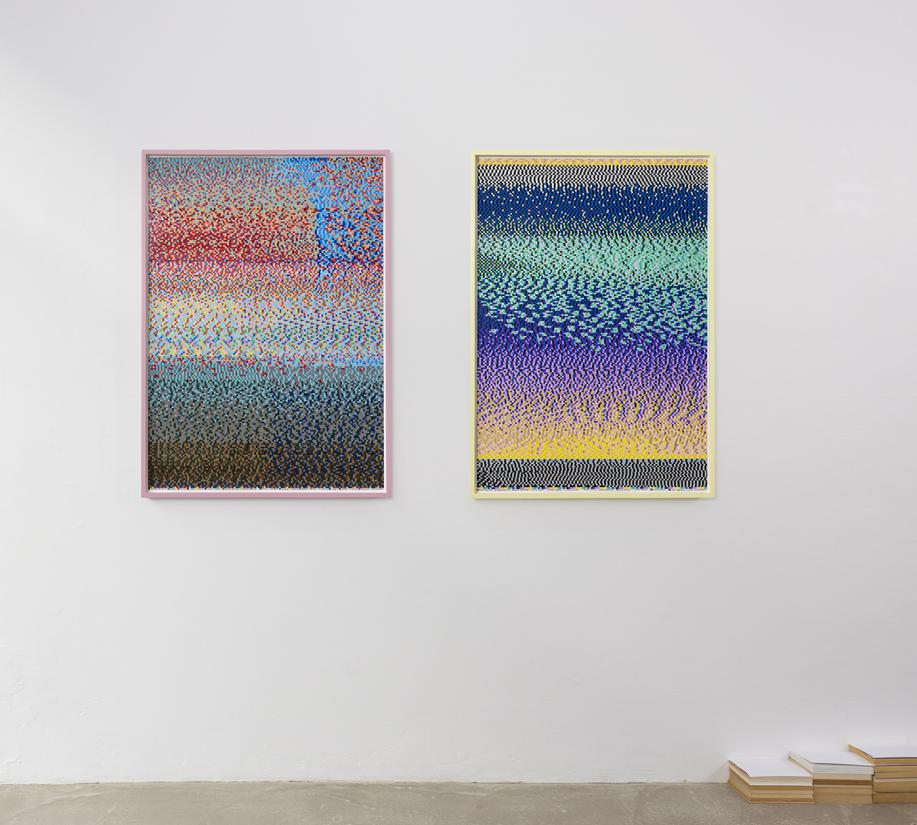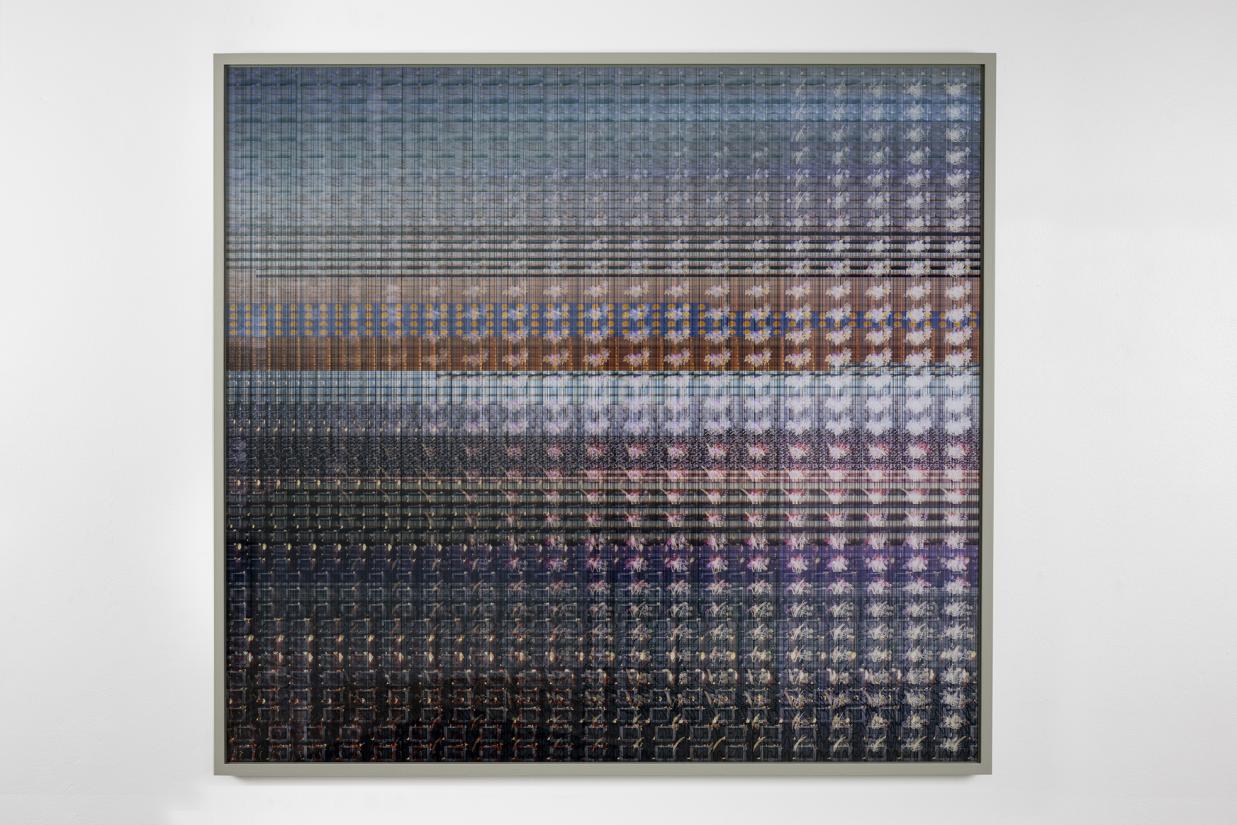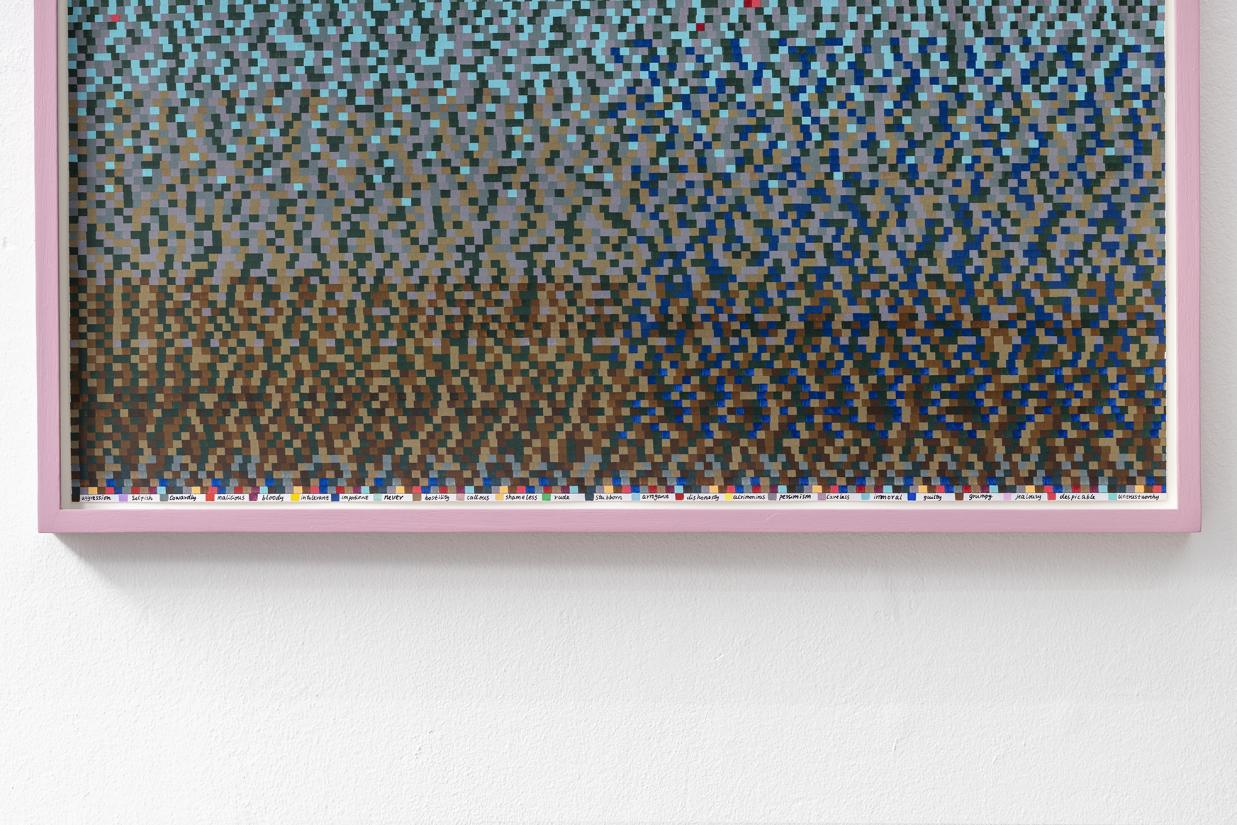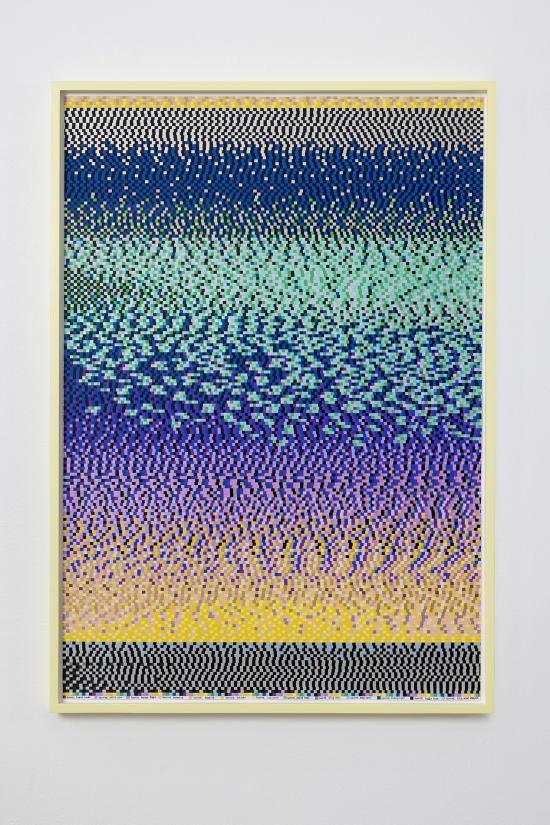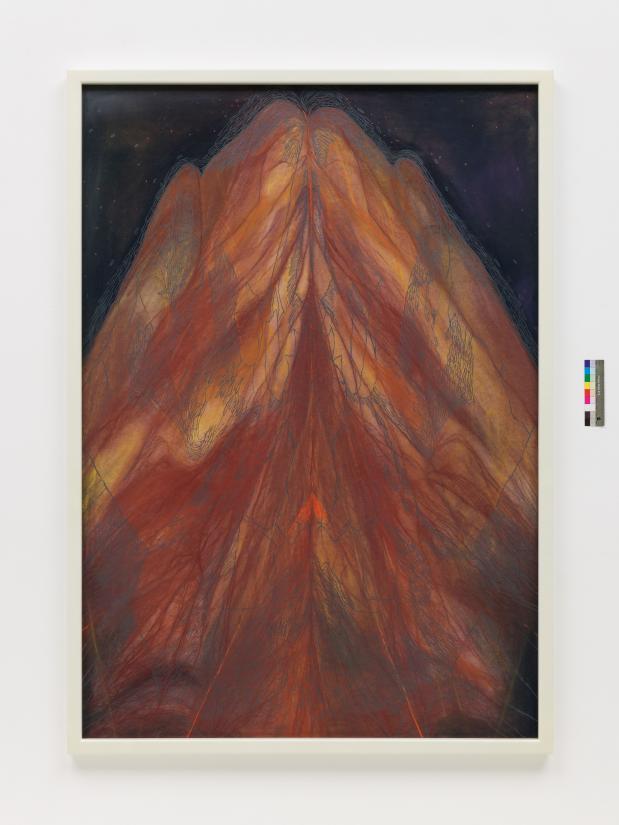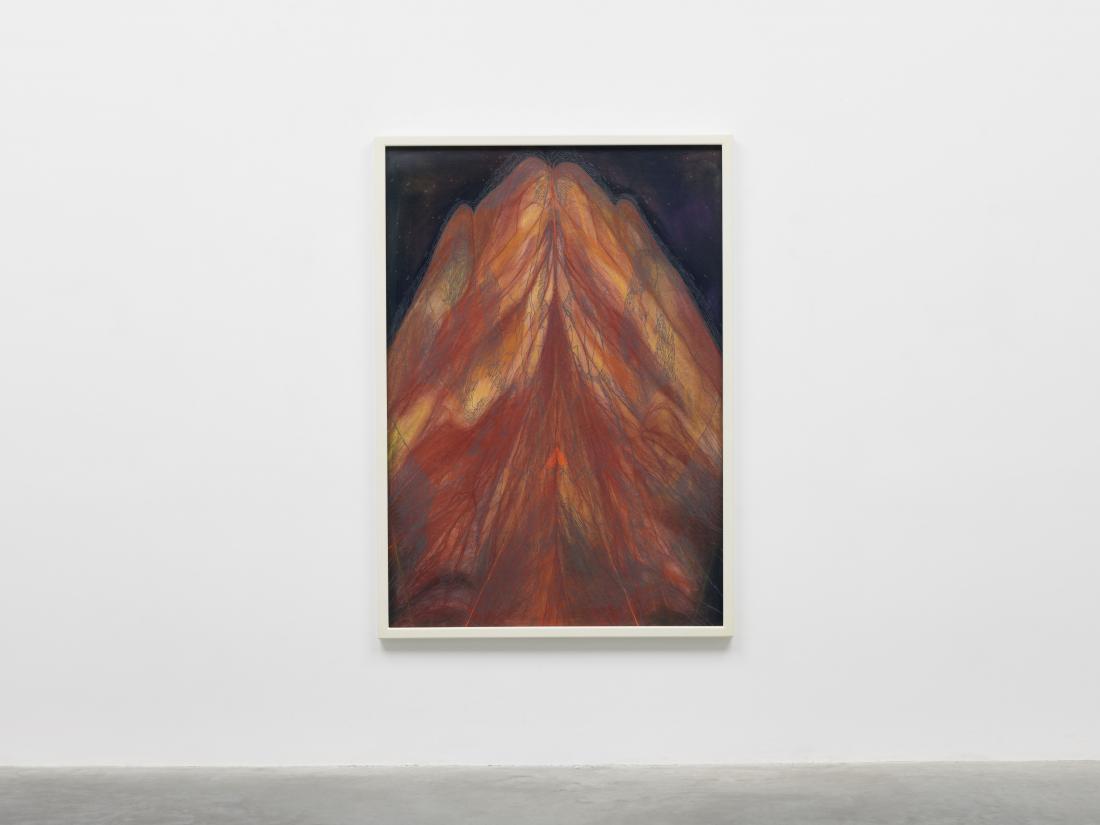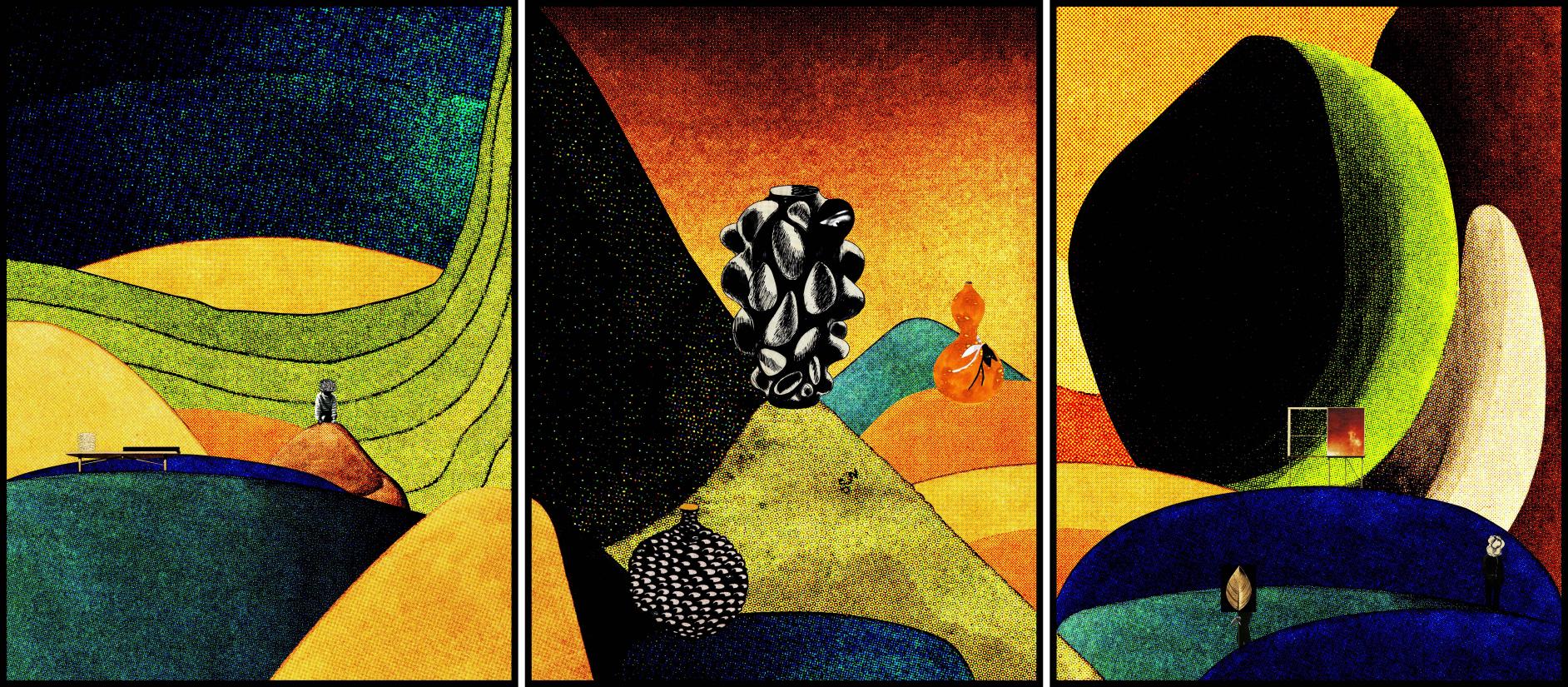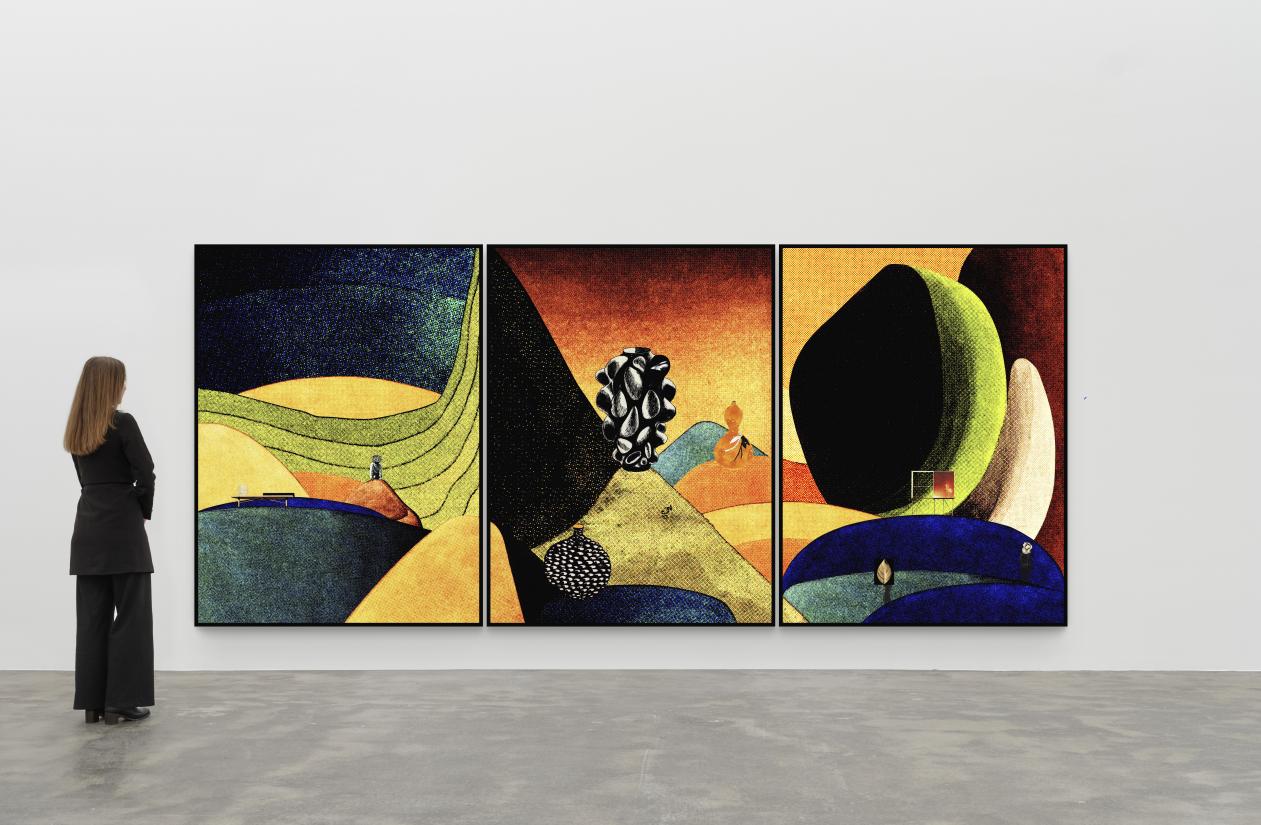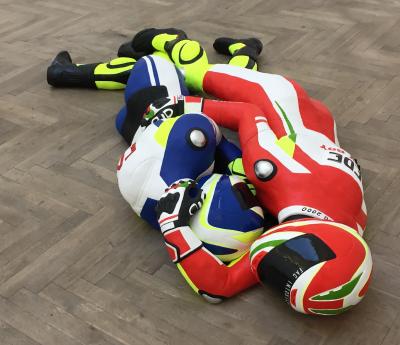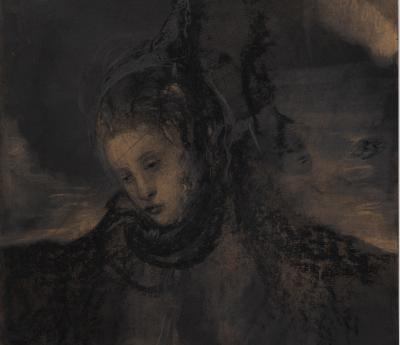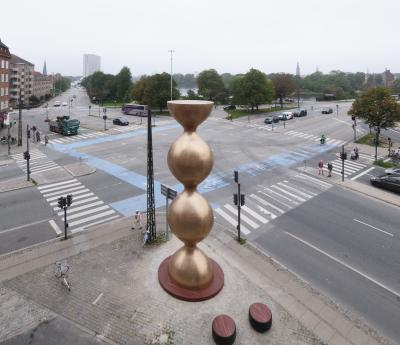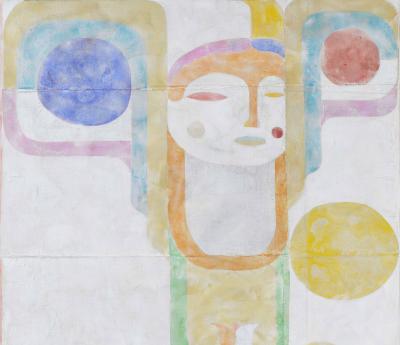In order to make give more prominence to new voices in the museum’s permanent collection, ARoS receives five significant works of art created by Liu Shiyuan (three pieces), Marguerite Humeau (one piece) and Jakob Kolding (one piece).
Over the coming years, ARoS will have a new, strong focus on paper art, manifested in part through a series of exhibition projects. This donation from the New Carlsberg Foundation supports the museum’s ambition in this field.
In this new presentation of the museum collection, the paper collection will be incorporated as pieces on permanent display but also as part of a re-activation of the collection through small, dynamic temporary focus presentations.
In recent decades, ARoS has created one of Denmark’s most high-profile collections of works by prominent contemporary artists, including Jonah Freeman & Justin Lowe’s Colony Sound (2020), Joachim Koester’s The Place of Dead Roads (2013) and Jakob Kudsk Steensen’s Berl-Berl (2022), which were also acquired with support from the New Carlsberg Foundation.
Liu Shiyuan
Liu Shiyuan (b. 1985) is a Chinese artist who lives and works in Beijing and Copenhagen. In photographic collages, she addresses the pervasive digital image culture we live in. Liu works mainly with machine-generated image selections produced by Google Image.
Through subtle changes in search terms, language or search criteria, she documents the impact of algorithms on the vast amounts of data that surround us. In Liu’s art, the machine-generated images often have a human feel, while the analogue appear digitally generated. This leads to interesting shifts in our understanding of the two parameters.
From a distance, Liu’s two works of acrylic on paper, Punished You And Me No. 15 and 16, look like distorted photographs, where the image has almost disappeared. Closer up, we see a number of fields resembling pixels. At the bottom of the pictures, there is a narrow stripe, which turns out to be a legend for the emotional meaning of the individual colours.
The artworks create a disconnect between viewer and image by creating an illusion of something that, at first glance, appears to be machine-generated but is in fact an analogue acrylic piece. Her art also addresses the relationship between man and machine, as the small pixels reveal themselves to be manmade while the embedded codes for deep emotions challange ur understanding of humans as decodable machines.
Marguerite Humeau
The French artist Marguerite Humeau (b. 1986) is known for her multidisciplinary artistic practice, which often combines elements of sculpture, installation and storytelling with the aim of exploring themes related to science, history and nature. Humeau’s works are often interconnected and form large, complex installations.
V – the mound became a wandering spirit, shifting across takes its point of departure in her recent study of termite mounds as radical alternatives to human settlements and social structures.
Some termite species are symbiotically connected to a certain species of fungus, Termitomyces. The termite mound is built around the fungus and keeps it alive. This brings to mind other symbiotic relationships between human and organic living conditions. Humeau has long taken an interest in this almost spiritual relationship, especially between fungi and termites.
Humeau’s gentle treatment of her material almost makes the piece seem like a representation of a form of nature religion, while on paper, the termite study is linked to more classic scientific documentations of insects.
Jakob Kolding
The Danish artist Jakob Kolding (b. 1971) graduated from the Royal Danish Academy of Fine Arts in 2000. Kolding lives and works in Berlin. His fragmented and aesthetically inviting collages intertwine and explore a number of topics, especially identity, politics and the mobility of the body.
His piece Untitled (refurbished) is a triptych that shows a sort of mental landscape inhabited by elements ranging from amorphous rocky structures to modernist design objects by Axel Salto and other well-known modernist designers. The piece is expressive, almost symbolist, and the connotations to an inner landscape underscore the role of design objects in our common cultural heritage; objects that we all surround ourselves with and relate to.
Kolding’s art often addresses societal narratives, and in Untitled (refurbished), he grapples with the canonized status of Danish modernism, which holds a key position in our shared national visual culture. Kolding’s art addresses how a common culture can be inclusive but also exclusive: people who master the underlying social codes, visual as well as narrative, feel a bond, while the ones who do not are left outside, searching for meaning.
